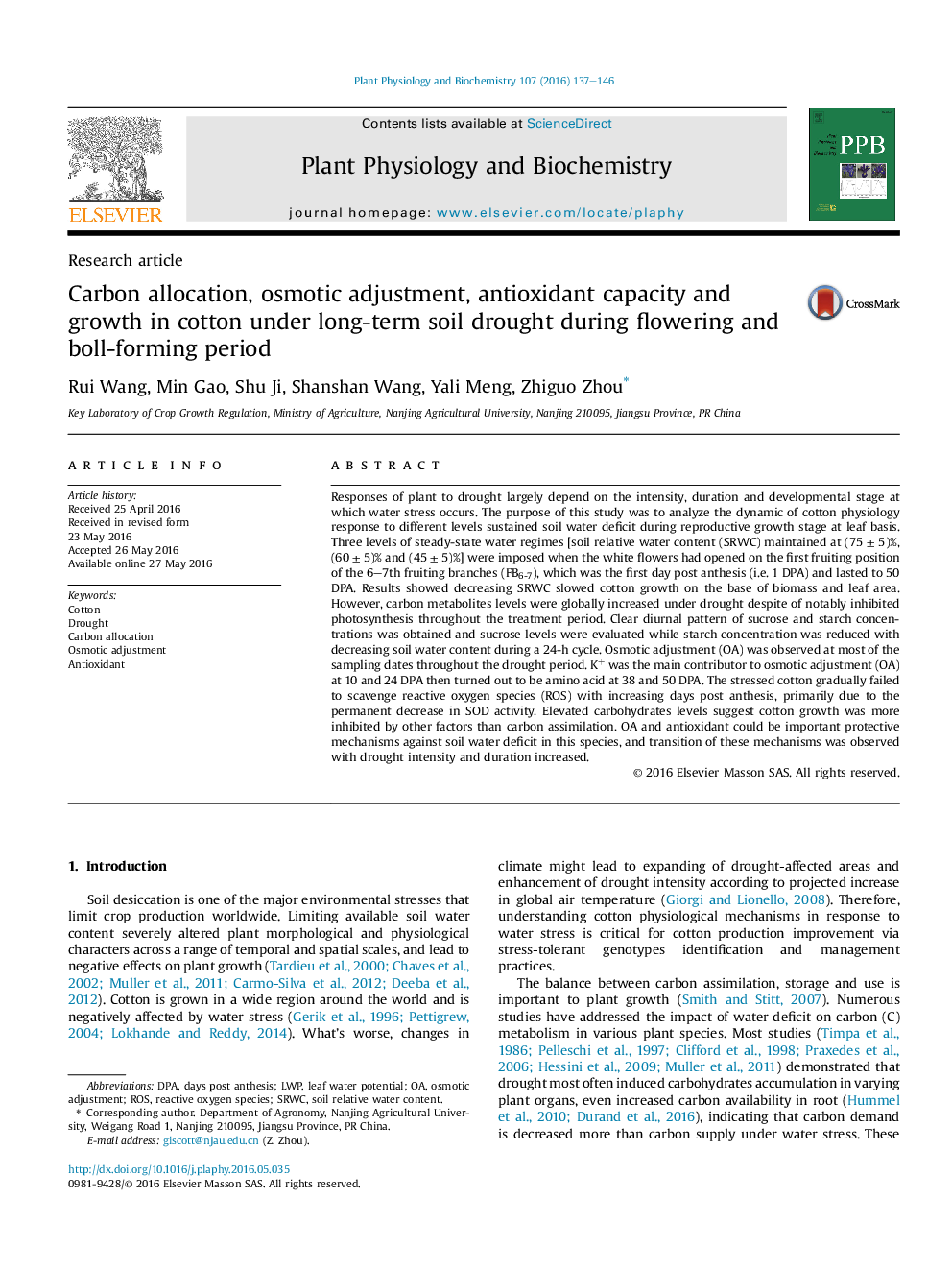| کد مقاله | کد نشریه | سال انتشار | مقاله انگلیسی | نسخه تمام متن |
|---|---|---|---|---|
| 2014659 | 1541914 | 2016 | 10 صفحه PDF | دانلود رایگان |
• Cotton leaf accumulated carbohydrates throughout the long-term soil drought.
• K+ and organic acid in cotton leaf contributed most to OA at the early and later drought period, respectively.
• The antioxidant level in cotton leaf was not sufficient to prevent long-term damage due to soil water deficit.
Responses of plant to drought largely depend on the intensity, duration and developmental stage at which water stress occurs. The purpose of this study was to analyze the dynamic of cotton physiology response to different levels sustained soil water deficit during reproductive growth stage at leaf basis. Three levels of steady-state water regimes [soil relative water content (SRWC) maintained at (75 ± 5)%, (60 ± 5)% and (45 ± 5)%] were imposed when the white flowers had opened on the first fruiting position of the 6–7th fruiting branches (FB6-7), which was the first day post anthesis (i.e. 1 DPA) and lasted to 50 DPA. Results showed decreasing SRWC slowed cotton growth on the base of biomass and leaf area. However, carbon metabolites levels were globally increased under drought despite of notably inhibited photosynthesis throughout the treatment period. Clear diurnal pattern of sucrose and starch concentrations was obtained and sucrose levels were evaluated while starch concentration was reduced with decreasing soil water content during a 24-h cycle. Osmotic adjustment (OA) was observed at most of the sampling dates throughout the drought period. K+ was the main contributor to osmotic adjustment (OA) at 10 and 24 DPA then turned out to be amino acid at 38 and 50 DPA. The stressed cotton gradually failed to scavenge reactive oxygen species (ROS) with increasing days post anthesis, primarily due to the permanent decrease in SOD activity. Elevated carbohydrates levels suggest cotton growth was more inhibited by other factors than carbon assimilation. OA and antioxidant could be important protective mechanisms against soil water deficit in this species, and transition of these mechanisms was observed with drought intensity and duration increased.
Journal: Plant Physiology and Biochemistry - Volume 107, October 2016, Pages 137–146
